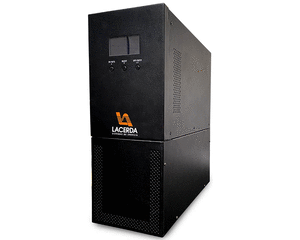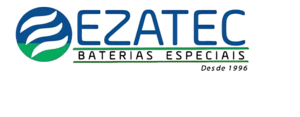Overview on Battery Charging Systems for Electric Vehicles Pierpaolo Dini * , Sergio Saponara and Antonio Colicelli Department of Information Engineering, University of Pisa, Via Girolamo Caruso n.16, 56100 Pisa, Italy
No Blog Eletrônica de Potência você encontrará informações sobre teses,artigos,seminarios,congressos,tecnologias,cursos,sobre eletrônica potência. “TEMOS O DESTINO QUE MERECEMOS. O NOSSO DESTINO ESTA DE ACORDO COM OS NOSSOS MERITOS” ALBERT EINSTEIN. Imagination is more important than knowledge, for knowledge is limited while imagination embraces the entire world. EL FUTURO SE CONSTRUYE HOY,EL SUCESSO NO ES FRUTO DE LA CASUALIDAD,SE HUMILDE ,APRENDE SIEMPRE CADA DIA.
AUTOR DO BLOG ENG.ARMANDO CAVERO MIRANDA SÃO PAULO BRASIL

.gif)
“GRAÇAS A DEUS PELA VIDA,PELA MINHA FAMÍLIA,PELO TRABALHO.PELO PÃO DE CADA DIA,POR NOS PROTEGER DO MAL”
“SE SEUS PROJETOS FOREM PARA UM ANO,SEMEIE O GRÂO.SE FOREM PARA DEZ ANOS,PLANTE UMA ÁRVORE.SE FOREM PARA CEM ANOS,EDUQUE O POVO”


https://picasion.com/


quarta-feira, 29 de janeiro de 2025
Overview on Battery Charging Systems for Electric Vehicles Pierpaolo Dini * , Sergio Saponara and Antonio Colicelli
Overview on Battery Charging Systems for Electric Vehicles Pierpaolo Dini * , Sergio Saponara and Antonio Colicelli Department of Information Engineering, University of Pisa, Via Girolamo Caruso n.16, 56100 Pisa, Italy
segunda-feira, 27 de janeiro de 2025
ESTUDO DE CONVERSORES ESTÁTICOS CA-CA MONOFÁSICOS E TRIFÁSICOS BASEADOS NO PRINCÍPIO DO CAPACITOR CHAVEADO Mauricio Dalla Vecchia, Telles Brunelli Lazzarin, Ivo Barbi Universidade Federal de Santa Catarina – UFSC, Florianópolis – SC, Brasil
ESTUDO DE CONVERSORES ESTÁTICOS CA-CA MONOFÁSICOS ETRIFÁSICOS BASEADOS NO PRINCÍPIO DO CAPACITOR CHAVEADO Mauricio Dalla Vecchia, Telles Brunelli Lazzarin, Ivo BarbiUniversidade Federal de Santa Catarina – UFSC, Florianópolis – SC, Brasil e-mail: m.dallavecchia90@gmail.com, telles@inep.ufsc.com, ivobarbi@inep.ufsc.br
domingo, 26 de janeiro de 2025
Simple Method to Estimate Battery Lifetime and Upkeep of Lead-Acid and Lithium-Ion Batteries-Pedro C. Bolsi 1,2, Edemar O. Prado 1,2, Romario J. Nazaré 2, Hamiltom C. Sartori 1, José R. Pinheiro 1,2 1Universidade Federal de Santa Maria, Santa Maria - RS, Brasil 2Universidade Federal da Bahia, Salvador - BA, Brasil
Simple Method to Estimate Battery Lifetime and Upkeep of Lead-Acid and Lithium-Ion Batteries
Pedro C. Bolsi 1,2, Edemar O. Prado 1,2, Romario J. Nazaré 2, Hamiltom C. Sartori 1, José R. Pinheiro 1,2
1Universidade Federal de Santa Maria, Santa Maria - RS, Brasil
2Universidade Federal da Bahia, Salvador - BA, Brasil
e-mail: pedrobolsi@ufba.br, edemar.prado@ufba.br, romario.jesus@ufba.br, hamiltomsar@gmail.com, jrenes@gepoc.ufsm.br
ABSTRACT This work provides an event-oriented method to model and predict the lifetime of leadacid and lithium-iron phosphate batteries. An ampere-hour integration method is proposed to be used in conjunction with the event-oriented method to achieve higher accuracy. The methods are applied to lead acid and lithium-iron phosphate batteries on a commercial 1 kW single-office/home-office uninterruptible power supply (UPS). Additional circuits for measurements, or microprocessors are avoided to not increase the UPS cost, reducing its market competitiveness. The usefulness of the proposed approach is demonstrated by an upkeep analysis based on the cost of the battery and the service time for each battery technology.
VIEW FULL PAPER: https://journal.sobraep.org.br/index.php/rep/article/view/981
DOWNLOAD : https://journal.sobraep.org.br/index.php/rep/article/view/981/881
Design of Uninterruptible Power Supply Inverters for Different Modulation Techniques Using Pareto Front for Cost and Efficiency Optimization-Edemar O. Prado , Pedro C. Bolsi , Hamiltom C. Sartori and José R. Pinheiro-BRASIL
Design of Uninterruptible Power Supply Inverters for Different Modulation Techniques Using Pareto Front for Cost and Efficiency Optimization Edemar O. Prado 1,2,* , Pedro C. Bolsi 1,2 , Hamiltom C. Sartori 2 and José R. Pinheiro 1,2
LCL filter based high power density AC/DC converter for fast charging applications-Nguyen Dinh Tuyen, Nguyen Van Minh Tam, Truong Phuoc Hoa Department of Power Delivery, Faculty of Electrical and Electronics Engineering, Ho Chi Minh City University of Technology
Journal homepage: http://ijpeds.iaescore.com LCL filter based high power density AC/DC converter for fast charging applications Nguyen Dinh Tuyen, Nguyen Van Minh Tam, Truong Phuoc Hoa
A single-stage full bridgeless boost half-bridge AC/DC converter with bidirectional switch Mohamad Affan Bin Mohd Noh1, Mohd Rodhi Bin Sahid2, Vinesh Thiruchelvam3 1,3School of Engineering, Asia Pacific University of Technology & Innovation, Malaysia 1,2School of Electrical Engineering, Universiti Teknologi Malaysia, Malaysia
International Journal of Power Electronics and Drive Systems (IJPEDS) Vol. 12, No. 4, December 2021, pp. 2336~2348 ISSN: 2088-8694, DOI: 10.11591/ijpeds.v12.i4.pp2336-2348
sexta-feira, 24 de janeiro de 2025
quinta-feira, 23 de janeiro de 2025
Paralelismo de inversores de tensão aplicado a Nobreaks: teoria, estratégias de controle e exemplo de projeto-Autor: Telles B. Lazzarin Ano: 2012 - INSTITUTO FEDERAL SANTA CATARINA-BRASIL
EXCELENTE APORTE CIENTIFICO DO DR. TELLES B. LAZZARIN UM LIVRO ESPECIALMENTE UTIL PARA ESTUDANTES,ENGENHEIROS DE GRADUAÇÃO E POS-GRADUAÇÃO DE ENGENHARIA ELETRICA E ELETRÔNICA
President of the Brazilian Association of Power Electronics (SOBRAEP) Coordinator of the Postgraduate Program in Electrical Engineering at UFSC (PPGEEL) Professor at the Federal University of Santa Catarina (UFSC) Universidade Federal de Santa Catarina Universidade Federal de Santa Catarina Santa Catarina, Brazil.
LIVRO PDF COMPLETO:
quarta-feira, 22 de janeiro de 2025
An Active AC Grid to DC Microgrid Interface Using a Bidirectional Bridgeless Flyback Converter Pablo J. Quintana-Barcia*, Jorge Garcia, Manuel Rico-Secades and Emilio L. Corominas University of Oviedo, Department of Electrical, Electronic, Computers and Systems Engineering, Spain
Input Stage with Double Functionality Applied to a High Performance Three-Phase UPS William A. Venturini, Henrique Jank, Fábio E. Bisogno, Mário L. S. Martins, Humberto Pinheiro ESTÁGIO DE ENTRADA COM DUPLA FUNCIONALIDADE APLICADO A UMA UPS TRIFÁSICA DE ALTO DESEMPENHO William A. Venturini, Henrique Jank, Fábio E. Bisogno, Mário L. S. Martins, Humberto Pinheiro Universidade Federal de Santa Maria, Santa Maria – RS, Brasil
Desempenho Input Stage with Double Functionality Applied to a High Performance Three-Phase UPS William A. Venturini, Henrique Jank, Fábio E. Bisogno, Mário L. S. Martins, Humberto Pinheiro ESTÁGIO DE ENTRADA COM DUPLA FUNCIONALIDADE APLICADO A UMA UPS TRIFÁSICA DE ALTO DESEMPENHO William A. Venturini, Henrique Jank, Fábio E. Bisogno, Mário L. S. Martins, Humberto Pinheiro Universidade Federal de Santa Maria, Santa Maria – RS, Brasil e-mail: {williamventurini, hiquejank, fbisogno, mariolsm, humberto.ctlab.ufsm.br}@gmail.com
terça-feira, 21 de janeiro de 2025
Isolated Single-stage Three-phase AC/DC Converter using Bidirectional Switches Ramandeep Narwal† , Isaac Wongx , Subhashish Bhattacharya‡ , B. Jayant Baliga§ and Douglas C. Hopkins∗ FREEDM Systems Center, Department of Electrical and Computer Engineering North Carolina State Univers
Isolated Single-stage Three-phase AC/DC Converter using Bidirectional Switches Ramandeep Narwal† , Isaac Wongx , Subhashish Bhattacharya‡ , B. Jayant Baliga§ and Douglas C. Hopkins∗ FREEDM Systems Center, Department of Electrical and Computer Engineering North Carolina State University Raleigh, NC 27695, USA
Abstract—The advent of the SiC Bidirectional FET (BiDFET), a monolithic 1.2 kV bidirectional switch, has rendered the single-stage three-phase AC/DC converter topology a promising approach for implementing AC/DC converters. This topology, which integrates a full-bridge converter with a single-phase to three-phase matrix converter via a high-frequency transformer, is particularly suitable for applications requiring galvanic isolation, buck-boost functionality, and bidirectional power flow. The single-stage design eliminates the need for bulky and unreliable electrolytic capacitors, and utilizes a single magnetic component for power transfer. In the matrix converter, bidirectional switches, which were traditionally implemented using combinations of multiple semiconductor devices such as MOSFETs, IGBTs, and diodes, can now be realized using the single-chip solution, BiDFET. This advancement leads to a lower switch count, compact converter implementation, with lower inductance commutation cells, thereby enhancing the overall efficiency and compactness of the system. The paper presents a unified model of the converter, considering all control parameters, including the duty cycles and phase shift of transformer voltages. Detailed expressions for power transfer, transformer currents, and currents at AC and DC ports are provided. Additionally, the paper outlines the conditions necessary for soft-switching of all switches and the commutation schemes required for the practical implementation of the matrix converter modulation scheme. A hardware prototype of a 10 kW, 480 VRMS, LL/ 800 V AC/DC system has been developed, and experimental results are presented to demonstrate its performance.
VIEW FULL PAPER: https://www.osti.gov/servlets/purl/2324747
Planar Transformer Systems for Modular Power Electronics in Long-Haul, Low-Cost PV Systems-Mike K. Ranjram Title: Assistant Professor-Arizona State University
Planar Transformer Systems for Modular Power Electronics in Long-Haul, Low-Cost PV Systems Mike K. Ranjram Title: Assistant Professor-Arizona State University
Design and Qualification of a 100 kW Three-Phase SiC-Based Generator Rectifier Unit Rated for 50,000 ft Altitude Jiewen Hu, Member, IEEE, Xingchen Zhao, Student Member, IEEE, Lakshmi Ravi, Student Member, IEEE, Rolando Burgos, Senior Member, IEEE, Dong Dong,
Design and Qualification of a 100 kW Three-Phase SiC-Based Generator Rectifier Unit Rated for 50,000 ft Altitude Jiewen Hu, Member, IEEE, Xingchen Zhao, Student Member, IEEE, Lakshmi Ravi, Student Member, IEEE, Rolando Burgos, Senior Member, IEEE, Dong Dong, Senior Member, IEEE, Richard Eddins, Sriram Chandrasekaran and Saeed Alipour
segunda-feira, 20 de janeiro de 2025
Optimal Design of MHz LLC Converter for 48V Bus Converter Application Yinsong Cai, Student Member, IEEE, Mohamed H. Ahmed, Student Member, IEEE, Qiang Li, Member, IEEE, and Fred C. Lee, Life Fellow, IEEE
Optimal Design of MHz LLC Converter for 48V Bus Converter Application Yinsong Cai, Student Member, IEEE, Mohamed H. Ahmed, Student Member, IEEE, Qiang Li, Member, IEEE, and Fred C. Lee, Life Fellow, IEEE
domingo, 19 de janeiro de 2025
Twelve-Step Voltage Source Inverter: A Three-Phase Six-Levels Inverter Using Planar Transformers Haitham KANAKRI, Euzeli Cipriano DOS SANTOS JR., and Maher RIZKALLA
Twelve-Step Voltage Source Inverter: A Three-Phase Six-Levels Inverter Using Planar Transformers Haitham KANAKRI, Euzeli Cipriano DOS SANTOS JR., and Maher RIZKALLA
Abstract—Multi-level inverters (MLIs) are becoming increasingly popular in high-speed motor drive systems for modern electric aircraft applications. However, two significant limitations are associated with current MLIs technology: (1) the high switching losses due to the high carrier switching frequency and (2) the complex modulation schemes required to maximize the DC source utilization. Consequently, the development of new topologies to mitigate these limitations is imperative for the rapid advancement of future electric aircraft systems. This paper introduces a six-level twelve-step inverter (TSI) that utilizes twelve switches and three planar high-frequency transformers. Implementing the proposed configuration ensures maximum DC source utilization, with a peak phase voltage of 5Vdc / 3. The proposed solution presents less semiconductor losses than the conventional MLIs, surpassing conventional MLIs, associated with neutral point clamped (NPC), flying capacitor (FC), and cascaded H-bridge (CHB). Experimental results demonstrate the TSI’s operation under static and dynamic conditions and its capability to function in three different modes: three-step, six-step, and twelve-step operations. The paper also offers a comprehensive design of the proposed planar transformer, supported by theoretical analysis, finite element analysis (FEA), and experimental validation.
VIEW FULL TEXT WEB: Page 263-273
https://file.cpss.org.cn/uploads/allimg/20240927/CPSS%20TPEA%20V9N3.pdf
Design and Analysis of a Three-Phase High-Frequency Transformer for Three-Phase Bidirectional Isolated DC-DC Converter Using Superposition Theorem-by Yasir S. Dira ,Ahmad Q. Ramli ,Nadia M. L. Tan,and Giampaolo Buticchi
Design and Analysis of a Three-Phase High-Frequency Transformer for Three-Phase Bidirectional Isolated DC-DC Converter Using Superposition Theorem-by Yasir S. Dira ,Ahmad Q. Ramli ,Nadia M. L. Tan,and Giampaolo Buticchi Institute of Power Engineering, Universiti Tenaga Nasional, Kajang 43000, Malaysia; yasirsabah291@gmail.com (Y.S.D.); qisti@uniten.edu.my (A.Q.R.) 2 Key Laboratory of More Electric Aircraft Technology of Zhejiang Province, University of Nottingham Ningbo China, Ningbo 315100, China
sábado, 18 de janeiro de 2025
Power Losses Analysis of Multiphase Interleaved DC-DC Boost Converter using OrCAD PSpiceSoftware-A.A.Bakar Department of Electrical Engineering Universiti Tun Hussein Onn Malaysia-T.Sithananthan Department of Electrical Engineering Universiti Tun Hussein Onn Malaysia
The Analysis and Comparison of Leakage Inductance in Different Winding Arrangements for Planar Transformer Ziwei Ouyang, Ole C. Thomsen, Michael A. E. Andersen Department of Electrical Engineering, Technical University of Denmark
The Analysis and Comparison of Leakage Inductance in Different Winding Arrangements for Planar Transformer Ziwei Ouyang, Ole C. Thomsen, Michael A. E. Andersen Department of Electrical Engineering, Technical University of Denmark
quinta-feira, 16 de janeiro de 2025
DESIGN AND DEVELOPMENT OF UPS FOR MARINE POWER SYSTEMS-V. Samsygin1, D. Sokolov, D. Ulitovsky, M. Sergeev, A. Martynov - TSNII SET Branch, Krylov State Research Centre, St. Petersburg, Russia 2 St. Petersburg University of Aerospace Engineering, Russia
DESIGN AND DEVELOPMENT OF UPS FOR MARINE POWER SYSTEMS
WELDING INVERTER CONTROL FOR ELECTRIC WELDING OF HIGH-PRESSURE PIPES V.S. Savchuk A.S. Plekhov Nizhny Novgorod State Technical University n.a. R.E. Alekseev Nizhny Novgorod, Russia
WELDING INVERTER CONTROL FOR ELECTRIC WELDING OF HIGH-PRESSURE PIPES
CONTROL OF POWER CONVERTERS IN DC MICROGRIDS WITH RES E.S. Andreenkov Smolensk branch of «National Research University «MPEI» Smolensk, Russia УПРАВЛЕНИЕ СИЛОВЫМИ ПРЕОБРАЗОВАТЕЛЯМИ В МИКРОСЕТЯХ ПОСТОЯННОГО ТОКА С ВИЭ Е.С. Андреенков
CONTROL OF POWER CONVERTERS IN DC MICROGRIDS WITH RES E.S. Andreenkov
quarta-feira, 15 de janeiro de 2025
CHARACTERIZATION OF MAGNETIC PERMEABILITY OF STEEL PLATES PACKAGE IN DIRECTION OF NORMAL MAGNETIC FLUX E.V. Kalinin e-mail: chernmaza@yandex.ru Nizhny Novgorod State Technical University n.a. R.E. Alekseev Nizhny Novgorod, Russia A.I. Chivenkov ORCID: 0000-0001-7578-8232 e-mail: chyvenkov@mail.ru Nizhny Novgorod State Technical University n.a. R.E. Alekseev Nizhny Novgorod, Russia
CHARACTERIZATION OF MAGNETIC PERMEABILITY OF STEEL PLATES PACKAGE IN DIRECTION OF NORMAL MAGNETIC FLUX
sexta-feira, 10 de janeiro de 2025
Leakage Inductance Calculation of Inductor Integrated Planar Transformer Jung-Cheol Kang1 and Se-Kyo Chung✝-The Transactions of the Korean Institute of Power Electronics, Vol. 29, No. 6, December 2024
인 덕 터 집 적 평 면 변 압 기 의 누 설 인 덕 턴 스 계 산 강정철1 , 정세교✝ Leakage Inductance Calculation of Inductor Integrated Planar Transformer Jung-Cheol Kang1 and Se-Kyo Chung✝
Abstract
The design and fabrication of magnetic components is one of the most important issues in realizing high-density switching power converters. An integrated magnetics (IM) technique has been used to reduce the size and cost of the magnetic components. In this technique, a leakage inductance can be used as a series inductor connected to the transformer for applications using resonant techniques, such as LLC resonant converter and other zero-voltage switching converters. The calculation of the leakage inductance is required to accurately control the value of the inductance in designing an IM device. This paper describes the calculation of the leakage inductance for the inductor integrated planar transformer used for the high-density LLC resonant converter. The leakage fluxes through the leakage layer is first considered to calculate the biggest part of the leakage inductance. The windings and insulators are also considered to improve calculation accuracy under the uneven number of windings for the PCB layer. Leakage inductance is calculated using magnetic energy equation and equivalent magnetic circuit. Experimental results are provided to verify the effectiveness of the proposed calculation method.
VIEWM FULL TEXT: http://journal.auric.kr/AURIC_OPEN_temp/RDOC/thekipe01/thekipe_202412_011.pdf
quinta-feira, 9 de janeiro de 2025
Instituto de Energia e Ambiente da USP-IEE-USP-SÃO PAULO -BRASIL


















































